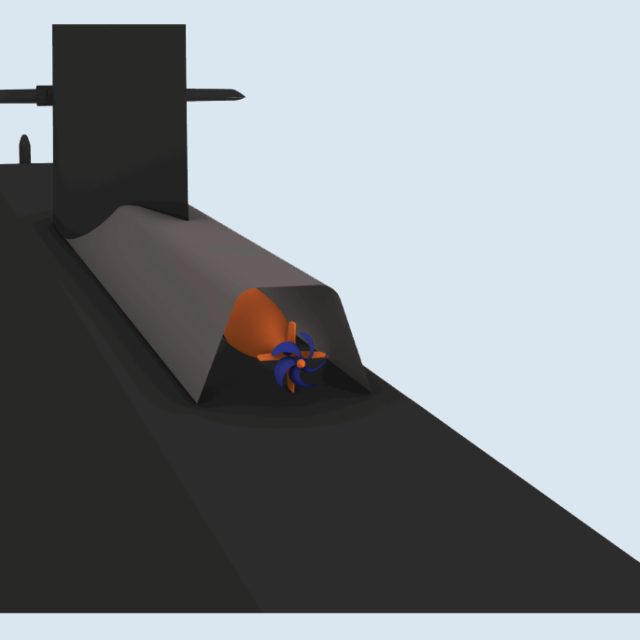
Platform System Integration of AUV Launch and Recovery on Existing Submarines
Significant progress has been made in the field of autonomous underwater vehicles (AUVs). These vehicles are anticipated to play an increasingly vital role in underwater warfare by undertaking tasks such as intelligence gathering, reconnaissance, surveillance and mine countermeasures. However, the range and endurance of AUVs are still restricted, making covert deployment critical during covert mission. This presents new platform integration challenges for both new and existing submarines. During our paper presentation at the UDT event on Tuesday, 9 May 2023, Nevesbu will give an overview of the platform system integration challenges and provide future design considerations. Below you can read a short summary of our paper.

Stowage of AUVs
The integration of Autonomous Underwater Vehicles (AUVs) with submarines can significantly enhance their capabilities for intelligence, reconnaissance, surveillance, mine countermeasures, and seabed warfare. AUVs have undergone major development in the past decades and are still continuing, especially on the topic of autonomy and underwater communication.
For the stowage of AUVs, two options can be considered; wet or dry stowage. With wet stowage, an AUV is stored outside the submarines pressure hull. Either on top of the submarines superstructure, or in a streamline body which can be considered as a wet hanger. Deployment and recovery can be achieved by means self-propelled swim in swim out in a docking station or can be assisted by divers or ROVs. The impact on the submarine design is limited for either option. However, they will impact the submarines resistance, flow field and target echo strength. Furthermore, they have the disadvantage of lacking organic repair, maintenance or payload changes. Creating a dry stowage option has a larger impact on the submarine design. The torpedo space is considered the most suitable location for the stowage and deployment of AUVs; for example trim and weight compensation systems and high-pressure air systems are already present in a torpedo space. AUVs up-to the equivalent size of a torpedo can potentially be deployed via torpedo tubes. For larger AUVs, a larger lockout will be required. Deployment of AUVs can be performed either by swim in swim out method or by means of a platform assisted deployment and recovery system.
Future design considerations
When creating new submarine designs, there are significantly more AUV options when it is considered from the start of the concept phase. Based on the worldwide development towards autonomous systems, it is recommended that AUV capabilities are taken into consideration for all new submarine designs from the concept phase. On the longer term, mothership concepts might be a very interesting design concept. Such designs could consist of dry stowage of AUVs in combination with a wet hanger and docking station. The amount and size of AUVs would enable a network of AUVs to perform multiple mission concepts.
Let’s talk about technology!
Would you like to know more about the platform system integration challenges regarding UAV launch and recovery and future design considerations? Then join Nevesbu’s paper presentation at the UDT on Tuesday, 9 May 2023 or visit our stand at the UDT: stand B10. During the presentation an overview of AUV developments will be given, multiple AUV recovery methods will be described and their impact on the submarine design will be analysed.
Would you like to know more about Platform System Integration of AUV Launch and Recovery on Existing Submarines? Wahyu will be pleased to tell you more.
